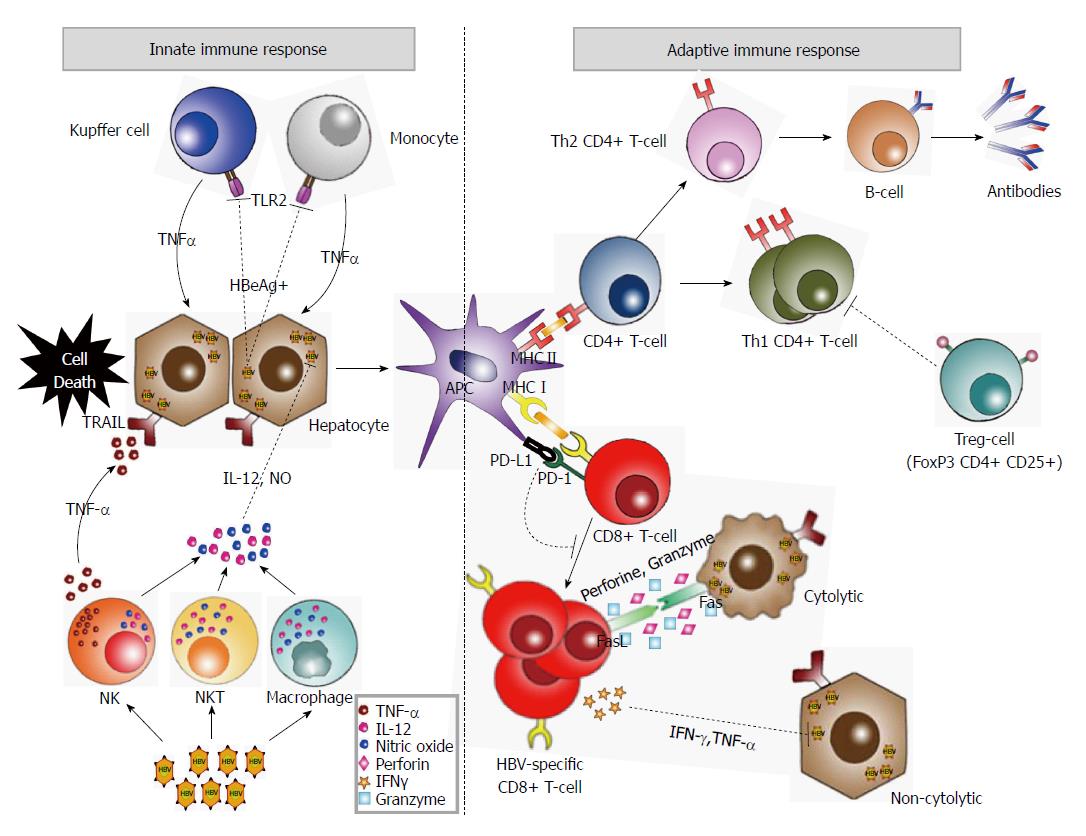Copyright
©2014 Baishideng Publishing Group Inc.
World J Gastroenterol. Oct 7, 2014; 20(37): 13293-13305
Published online Oct 7, 2014. doi: 10.3748/wjg.v20.i37.13293
Published online Oct 7, 2014. doi: 10.3748/wjg.v20.i37.13293
Figure 1 Summary of the innate immune response and cellular immune response against hepatitis B virus.
Natural killer (NK) cells, natural killer T (NKT) cells, dendritic cells, cytokines, chemokines and toll-like receptor (TLR) contribute to the innate immune response against hepatitis B virus (HBV). Also, NK cells, NKT and macrophages can inhibit HBV replication by producing interleukin (IL)-12 and nitric oxide. Dysfunction of the innate immune response in the immune tolerant phase may be explained by this process. However, HBeAg reduces TLR2 expression on hepatocytes, Kupffer cells and peripheral monocytes. Moreover, NK cell activation induces TRAIL-mediated death of hepatocytes in CHB, leading to liver injury. Chronic HBV carriers mount a defective T-cell response. CD8+ T cells cause the lysis of HBV-infected hepatocytes through cytolytic and non-cytolytic mechanisms. Non-cytolytic mechanisms are mediated by some specific cytokines, such as interferon (IFN)-γ and tumor necrosis factor (TNF)-α which selectively degrade replicating genomes of HBV without killing infected cells. In CHB, Tregs suppress effector T cells, which impair the cellular immune response. The programmed death-1 (PD-1) inhibitory receptor is involved in the impairment of virus-specific CD8 T-cell function.
- Citation: You CR, Lee SW, Jang JW, Yoon SK. Update on hepatitis B virus infection. World J Gastroenterol 2014; 20(37): 13293-13305
- URL: https://www.wjgnet.com/1007-9327/full/v20/i37/13293.htm
- DOI: https://dx.doi.org/10.3748/wjg.v20.i37.13293









